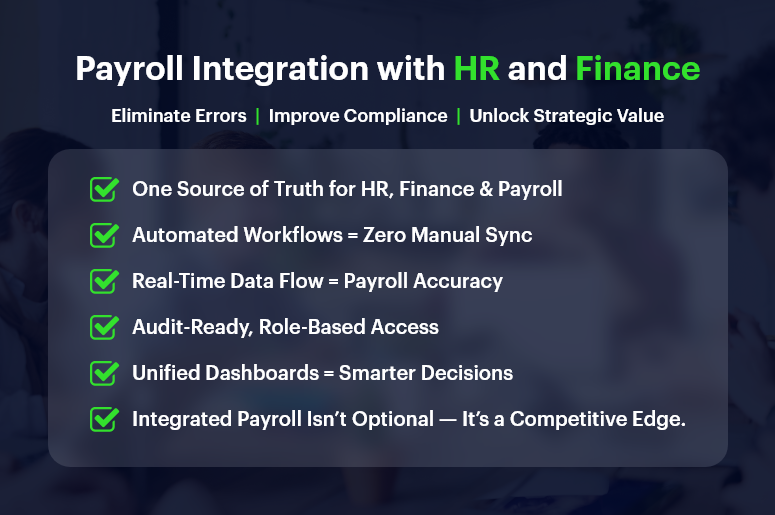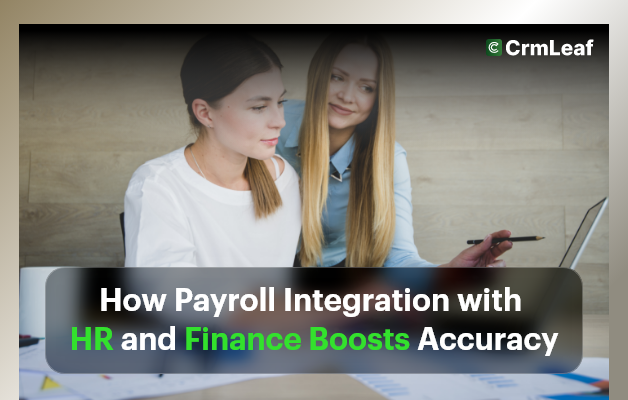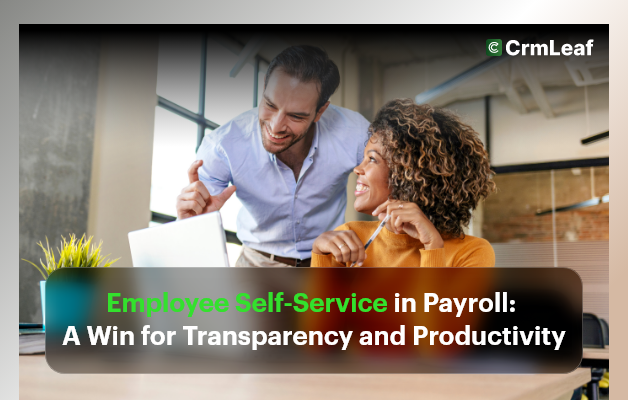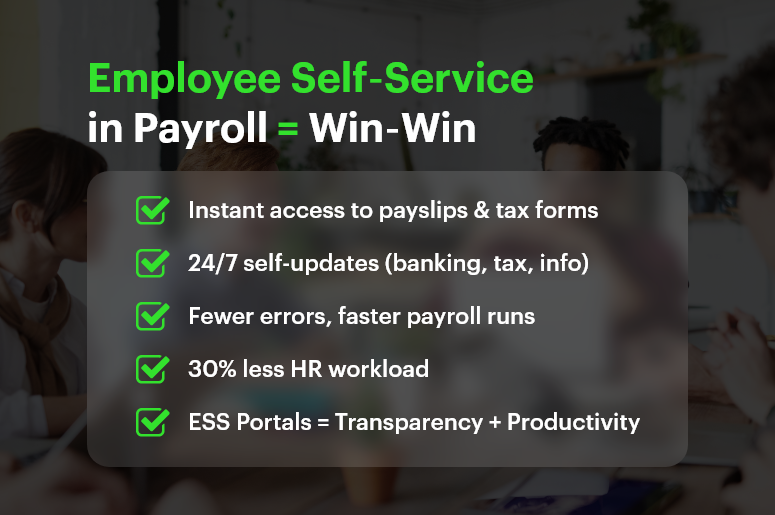Every month, HR teams pull hours, benefits, and leave data while finance teams reconcile costs. Yet without payroll integration with HR and finance, data mismatches emerge, and errors slip through the cracks. Manual misalignments result in inaccurate paychecks, compliance headaches, and lost confidence.
By linking payroll directly to HR and finance systems, organizations eliminate duplication, reduce mistakes, and safeguard trust — making payroll not just accurate but strategic. In this post, you’ll learn why payroll integration with HR and finance matters, how it transforms operations, and how CRMLeaf’s integrated CRM + ERP platform delivers results you can measure.

Business Need & Importance: Why Integration Matters Across Teams
Accurate payroll isn’t just about paying employees — it’s about consistency, compliance, and confidence across departments. When payroll doesn’t integrate with HR or finance, gaps emerge:
1. Misaligned Data Creates Errors
Even minor discrepancies in hours, deductions, or tax codes can lead to incorrect salaries or financial reports. Especially in industries like retail, hospitality, or consulting, where overtime and different pay structures abound, data alignment is critical.
2. Finance and HR Operate in Silos
Without integration, HR may see payroll data separate from finance budgets. That fragmentation delays reporting and undermines workforce planning.
3. Compliance Becomes a Risk
Tax rules, deductions, and benefit eligibility — these change often. Without automatic updates, manual systems amplify compliance risk and audit exposure.
For example, in manufacturing or logistics firms, workforce cost planning relies on aligned payroll, HR scheduling, and finance budgeting. In professional services firms, linking time tracking to payroll and invoicing ensures accurate client billing. And in tech startups, connecting HR records, payroll, and financial reporting supports fast growth with real-time visibility.
Best Practices & Actionable Tips: Boost Accuracy with Payroll Integration
Integrated systems aren’t magic — they follow best practices and smart workflows. Here’s how to implement robust payroll integration with HR and finance, especially when using CRMLeaf.
1. Use a Unified Platform for HR, Finance & Payroll
Rather than syncing separate tools, use a single CRM + ERP platform so HR, payroll, and finance draw from the same data sources.
This shared database ensures that changes in hours, benefits, or role assignments immediately flow into payroll calculations without mediation.
2. Automate Data Flow Between Modules
Ensure that timesheets, leave entries, and benefit changes automatically update payroll and finance ledgers.
For instance, when an HR manager marks an employee as full-time or adds a bonus, the system reflects that in the payroll run without human intervention.
3. Leverage Audit Trails and Role‑based Access
Accurate reporting requires transparent records of changes. Use logs that track when payroll data was updated — by whom and why.
Meanwhile, role-based permissions let HR see benefits and hours while finance sees cost breakdowns — without overexposure.
4. Design Smart Approval Workflows
Establish multi-tier approval (e.g., team lead approves timesheet before payroll processing).
When workflows trigger payroll only after verification, you reduce risk and avoid last-minute corrections.
5. Sync Compliance Rules and Tax Logic
Payroll integration with compliance modules ensures that tax tables, labor laws, and deductions are up to date.
Platforms like CRMLeaf can automatically enforce regional rules, avoiding manual recalibration each pay cycle.
6. Generate Unified Reporting Dashboards
Create dashboards that combine HR metrics (headcount, leave trends), payroll costs, and finance data (GL entries, cost centers).
This holistic view enables better forecasting, budgeting, and resource planning.
7. Provide Self‑Service Access for Teams
Employees and managers should access payslips, summary reports, leave balances, and benefit info via a shared portal.
This reduces HR queries and ensures consistent data visibility across departments.
Customer Success/Case Study
For example, GreenLeaf Consulting, a professional services firm, used payroll integration with HR and finance on CRMLeaf’s CRM + ERP platform to unify employee records, project billing, and payroll calculations seamlessly.
They automated:
- Timesheet approvals,
- Salary adjustments,
- Tax rule updates, and
- Benefits deductions
The results:
- Payroll errors dropped by 75% and manual adjustments nearly vanished
- Payroll processing time fell by 50%
- Finance forecasting accuracy improved by 20%, enabling smarter budgeting and expense allocation
By aligning HR, payroll, and finance in real time, GreenLeaf turned payroll into a data-driven advantage—not a compliance risk.
Key Takeaways & Closing
Integrated payroll integration with HR and finance is no longer optional — it’s a core requirement for accuracy, compliance, and efficiency.
- Manual or disconnected systems introduce errors, siloed data, and delays.
- With integration, you unify key data, automate workflows, and reduce risk.
- Accurate payroll becomes a driver of strategic insight instead of a monthly chore.
By using CRMLeaf’s unified CRM + ERP platform, businesses gain real-time visibility across payroll, HR, and finance — leading to better decisions, happier teams, and reduced costs.


